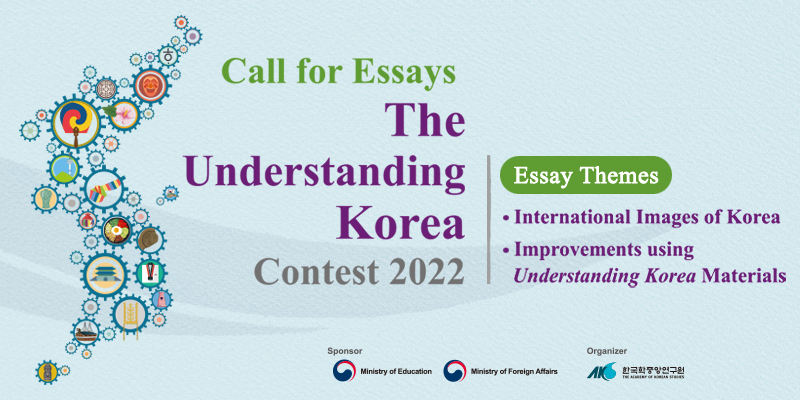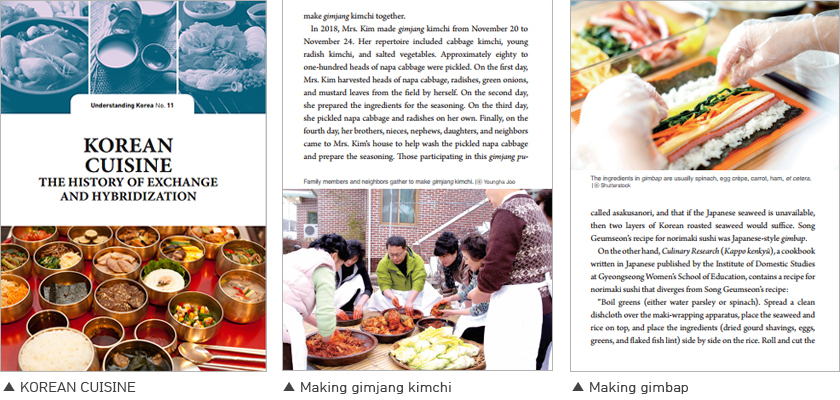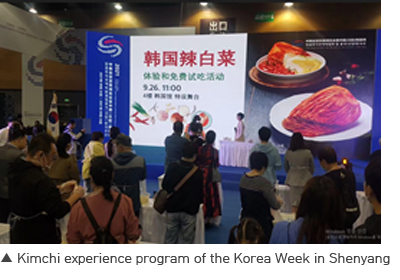Essay Contest Result

Understand Korea through Present Korean Media
I have been teaching Korean language and culture to Chinese youth at the Cultural Center for Korea-China Interchange in Shenyang, Liaoning Province, China, for 7 years. The Cultural Center for Korea-China Interchange, which opened in 2014, is a private cultural center. It has contributed to promoting friendship and goodwill between South Korea and China by developing programs in the fields of arts performance, education, exhibition, physical education, publishing, and patriots and veterans. Being a Korean-Chinese, I have had an extraordinary affection for Korean language and culture since I was young. That may have led me to work at a Korean cultural center run by a company headed by a Korean.
The city of Shenyang, Liaoning Province, China, has a deep historical and geographical relationship with South Korea. It is also under a heavy influence of the Korean Wave such as K-POP and K-DRAMA. Therefore, South Korea is not a strange country to Chinese people in Shenyang. Moreover, the Cultural Center for Korea-China Interchange is located in the Korea Town in Xita Street, the largest Korean residential area in China. It is against this backdrop that Chinese youth frequently visit the Cultural Center for Korea-China Interchange to learn Korean and experience Korean culture.
Many Chinese youth had already encountered South Korea through various media. Therefore, they seek a deeper level of insight beyond elementary understanding of Korean culture. They particularly have a strong desire for Korean food. They said they had been drawn to tteokbokki, pork belly and soju that almost every main character of Korean dramas enjoy. They wanted to cook or eat the Korean food themselves. So I created and ran an educational program that combines theory and experience for Chinese youth. I used "KOREAN CUISINE," which is offered by the Academy of Korean Studies as a basic class material.
Among the foods introduced in KOREAN CUISINE, I selected those which can be accessed relatively easily -- gimbap, kimchi, jajangmyeon, bibimbap and chicken – as basic contents. Then I first explained the origin and characteristics of each food. I allowed students to experience the foods one by one from the next class.
The city of Shenyang, Liaoning Province, China, has a deep historical and geographical relationship with South Korea. It is also under a heavy influence of the Korean Wave such as K-POP and K-DRAMA. Therefore, South Korea is not a strange country to Chinese people in Shenyang. Moreover, the Cultural Center for Korea-China Interchange is located in the Korea Town in Xita Street, the largest Korean residential area in China. It is against this backdrop that Chinese youth frequently visit the Cultural Center for Korea-China Interchange to learn Korean and experience Korean culture.
Many Chinese youth had already encountered South Korea through various media. Therefore, they seek a deeper level of insight beyond elementary understanding of Korean culture. They particularly have a strong desire for Korean food. They said they had been drawn to tteokbokki, pork belly and soju that almost every main character of Korean dramas enjoy. They wanted to cook or eat the Korean food themselves. So I created and ran an educational program that combines theory and experience for Chinese youth. I used "KOREAN CUISINE," which is offered by the Academy of Korean Studies as a basic class material.
Among the foods introduced in KOREAN CUISINE, I selected those which can be accessed relatively easily -- gimbap, kimchi, jajangmyeon, bibimbap and chicken – as basic contents. Then I first explained the origin and characteristics of each food. I allowed students to experience the foods one by one from the next class.

A large number of members of the Korean Culture Club of Liaoning University participated in the kimchi experience class. They were able to understand the memories and emotions of Koreans embedded in kimchi as well as its recipe. It was natural that they could compare kimchi of Korea with pao cai of China. The class was a process of broadening their knowledge and understanding of Korea and Korean people. They proudly presented kimchi they had made, filmed and posted it on the social media, playing the role of a kimchi ambassador. At the end of the class, they had fun eating Jeonju bibimbap with kimchi and drinking makgeolli and somaek.

The gimbap experience was very popular among children. They learned the names of the ingredients of gimbap in Korean after getting to know simple Korean greetings. They also learned Korean table manners. They learned the similarities and differences between Korean gimbap and Japanese sushi based on the contents of KOREAN CUISINE. The children were surprised by the variety of the gimbap ingredients, and they were excited seeing it rolled up with seaweed. It was a valuable time to experience Korean cuisine and Korean language and manners at the same time. They may not remember details of Korean foods, but they must cherish a good image of Korea.
 |
Likewise, I used KOREAN CUISINE to teach Chinese youth and children the origin and changing process of hansik and characteristics of individual Korean foods. I went on further to teach them the history and culture of Korea and the affectionate sentiment of Koreans. The talk about the program spread quickly. As a result, the Korean food experience program of the Cultural Center for Korea-China Interchange was able to move to the stage of the Korea Week in Shenyang, a national-level Chinese event, in 2021. The Shenyang city government designated kimchi and gimbap experience as the official program of the Shenyang Korea Week. The response from the participants was explosive. Many participants said making and eating of the Korean foods motivated them to visit South Korea. |
The "Understanding Korea Materials" of the Academy of Korean Studies, a basic material for understanding Korea, can be used valuably. It is regrettable, however, that they cannot be used fully in China due to some problems.
First, the Chinese version is limited. Only two of its 27 posts have been translated into Chinese. Educational handouts must be translated from English to Chinese. Each and every time, I get nervous because I could mistranslate and deliver incorrect contents. If it's not because of some sensitive relationship between South Korea and China, I would like to have a Chinese version. There are many youth in China who are very interested in Korean culture. They want to know Korea, its own culture. Providing a Chinese version of the service will give them an opportunity to know Korea more accurately.
Second, there are no materials that children or youth can easily understand. Chinese children will feel more familiar with Korea if materials are developed in such a way that characters of Korean animations that are popular in China, including "Backkom," "Super Wings," and "Pinkfong" are set as main characters taking fun trips to Korea. Culture is like an organic matter and can freely cross countries and borders. Likewise, if Chinese children dream of Korea and aim for Korea from an early age, South Korea and China will be closer than now.
Third, A "User's Guide" as an appendix to the "Understanding Korea Materials" would enhance overseas utilization of the materials. The diverse and colorful contents and photos of "Understanding Korea Materials" provide a useful opportunity for foreigners to understand Korean history and culture. This is the very reason to believe that a User's Guide made as a kind of teaching plan that can be used more effectively overseas will greatly help working-level field staff operate education programs. That will help educate various aspects of Korean culture in a systematic and concrete way.
Using "Understanding Korea Materials" in educational programs to increase understanding of Korea, I, as a hands-on teacher, fully recognized that it increased the level of understanding and participation of students. The materials will be the premier and best guide for field teachers and instructors who promote South Korea abroad If they are supplemented continually and problems raised in each overseas locality are addressed. Thank you.
First, the Chinese version is limited. Only two of its 27 posts have been translated into Chinese. Educational handouts must be translated from English to Chinese. Each and every time, I get nervous because I could mistranslate and deliver incorrect contents. If it's not because of some sensitive relationship between South Korea and China, I would like to have a Chinese version. There are many youth in China who are very interested in Korean culture. They want to know Korea, its own culture. Providing a Chinese version of the service will give them an opportunity to know Korea more accurately.
Second, there are no materials that children or youth can easily understand. Chinese children will feel more familiar with Korea if materials are developed in such a way that characters of Korean animations that are popular in China, including "Backkom," "Super Wings," and "Pinkfong" are set as main characters taking fun trips to Korea. Culture is like an organic matter and can freely cross countries and borders. Likewise, if Chinese children dream of Korea and aim for Korea from an early age, South Korea and China will be closer than now.
Third, A "User's Guide" as an appendix to the "Understanding Korea Materials" would enhance overseas utilization of the materials. The diverse and colorful contents and photos of "Understanding Korea Materials" provide a useful opportunity for foreigners to understand Korean history and culture. This is the very reason to believe that a User's Guide made as a kind of teaching plan that can be used more effectively overseas will greatly help working-level field staff operate education programs. That will help educate various aspects of Korean culture in a systematic and concrete way.
Using "Understanding Korea Materials" in educational programs to increase understanding of Korea, I, as a hands-on teacher, fully recognized that it increased the level of understanding and participation of students. The materials will be the premier and best guide for field teachers and instructors who promote South Korea abroad If they are supplemented continually and problems raised in each overseas locality are addressed. Thank you.

